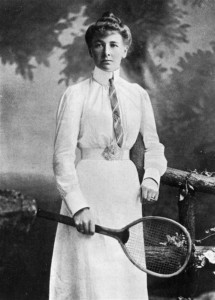A bit more on the tragic helicopter crash that took the lives of French swimming gold medalist Camille Muffat, French boxing medalist Alexis Vastine, and renowned French sailor, although not an Olympian, Florence Arthaud.
Muffat was the gold medalist in the women’s 400 metre freestyle at the London Olympics, and thus died while holding the crown. She becomes the 83rd Olympian to have died as the holding gold medalist. She is the 29th Olympian to have been an individual gold medalist, but dying before the event was next contested. (Earlier post incorrect as when checking the database I looked for Olympians dying within 4 years, and neglected some of the 1912 and 1936 Olympians who waited 8 and 12 years for the next Olympics. Thanks to Harri Piironen for pointing this out.)
The full list of the 83 Olympians who died while the holder of a gold medal is as follows:
[table]
Name,Gdr,Ssn,NOC,Spt,Year,YOD
Joseph Olivier,M,S,FRA,RUG,1900,1901
Alfred Tysoe,M,S,GBR,ATH,1900,1901
Galen C. Spencer,M,S,USA,ARC,1904,1904
David Bratton,M,S,USA,WAP,1904,1904
Étienne Desmarteau,M,S,CAN,ATH,1904,1905
George Van Cleaf,M,S,USA,WAP,1904,1905
George Sheldon,M,S,USA,DIV,1904,1907
David Hesser,M,S,USA,WAP,1904,1908
John B. Taylor,M,S,USA,ATH,1908,1908
Carl Holmberg,M,S,SWE,GYM,1908,1909
Reggie Doherty,M,S,GBR,TEN,1908,1910
Bernard Redwood,M,S,GBR,MTB,1908,1911
Carl Folcker,M,S,SWE,GYM,1908,1911
Kostas Tsiklitiras,M,S,GRE,ATH,1912,1913
Ralph Rose,M,S,USA,ATH,1912,1913
Ronald Brebner,M,S,GBR,FTB,1912,1914
Guido Romano,M,S,ITA,GYM,1912,1916
Gaston Salmon,M,S,BEL,FEN,1912,1917
Alister Kirby,M,S,GBR,ROW,1912,1917
Isaac Bentham,M,S,GBR,WAP,1912,1917
Victor Willems,M,S,BEL,FEN,1912,1918
Joseph Dines,M,S,GBR,FTB,1912,1918
Cecil Healy,M,S,ANZ,SWI,1912,1918
Henry Macintosh,M,S,GBR,ATH,1912,1918
Harry Sears,M,S,USA,SHO,1912,1920
Mike Kelly,M,S,USA,SHO,1920,1923
Frans De Haes,M,S,BEL,WLT,1920,1923
Émile Albrecht,M,S,SUI,ROW,1924,1927
Sybil Bauer,F,S,USA,SWI,1924,1927
Ödön von Tersztyánszky,M,S,HUN,FEN,1928,1929
René Borjas,M,S,URU,FTB,1928,1931
George Saling,M,S,USA,ATH,1932,1933
Andrew Libano,M,S,USA,SAI,1932,1935
Paul Wevers,M,S,GER,CAN,1936,1941
Ludwig Stubbendorf,M,S,GER,EQU,1936,1941
Herbert Adamski,M,S,GER,ROW,1936,1941
Hugo Strauß,M,S,GER,ROW,1936,1941
Kalle Jalkanen,M,W,FIN,CCS,1936,1941
Heinz Körvers,M,S,GER,HAN,1936,1942
Martin Karl,M,S,GER,ROW,1936,1942
Ernst Winter,M,S,GER,GYM,1936,1943
Arthur Knautz,M,S,GER,HAN,1936,1943
Hans Maier,M,S,GER,ROW,1936,1943
Hans Woellke,M,S,GER,ATH,1936,1943
Foy Draper,M,S,USA,ATH,1936,1943
Heinz Brandt,M,S,GER,EQU,1936,1944
Kurt Hasse,M,S,GER,EQU,1936,1944
Toni Merkens,M,S,GER,CYC,1936,1944
Endre Kabos,M,S,HUN,FEN,1936,1944
Georg Dascher,M,S,GER,HAN,1936,1944
Hannes Hansen,M,S,GER,HAN,1936,1944
Shigeo Arai,M,S,JPN,SWI,1936,1944
Lauri Koskela,M,S,FIN,WRE,1936,1944
Kustaa Pihlajamäki,M,S,FIN,WRE,1936,1944
Rudolf Lippert,M,S,GER,EQU,1936,1945
Willi Menne,M,S,GER,ROW,1936,1945
Ferenc Csík,M,S,HUN,SWI,1936,1945
Olivér Halassy,M,S,HUN,WAP,1936,1946
Corny Johnson,M,S,USA,ATH,1936,1946
Charles Leaf,M,S,GBR,SAI,1936,1947
Sayed Jaffar,M,S,IND,HOK,1936,1937
Gunnar Höckert,M,S,FIN,ATH,1936,1940
Nils Östensson,M,W,SWE,CCS,1948,1949
George Ahlgren,M,S,USA,ROW,1948,1951
Ed Sanders,M,S,USA,BOX,1952,1954
Skippy Browning,M,S,USA,DIV,1952,1956
Viktor Blinov,M,W,URS,ICH,1968,1968
István Kozma,M,S,HUN,WRE,1968,1970
Yuliya Riabchynska,F,S,URS,CAN,1972,1973
Yuriy Lahutin,M,S,URS,HAN,1976,1978
Bronisław Malinowski,M,S,POL,ATH,1980,1981
Volodymyr Smyrnov,M,S,URS,FEN,1980,1982
Sergey Rogozhin,M,S,URS,EQU,1980,1983
Valeriy Hoborov,M,S,URS,BAS,1988,1989
Paolo Caldarella,M,S,ITA,WAP,1992,1993
Roberto Balado,M,S,CUB,BOX,1992,1994
Fabio Casartelli,M,S,ITA,CYC,1992,1995
Sergey Grinkov,M,W,RUS,FSK,1994,1995
Sandra Schmirler,F,W,CAN,CUR,1998,2000
Bekzat Sattarkhanov,M,S,KAZ,BOX,2000,2000
Sammy Wanjiru,M,S,KEN,ATH,2008,2011
Camille Muffat,F,S,FRA,SWI,2012,2015
[/table]
Here is the list of the 29 individual gold medalists who died as holders:
[table]
Name,Gdr,Ssn,NOC,Spt,Year,YOD
Étienne Desmarteau,M,S,CAN,ATH,1904,1905
George Sheldon,M,S,USA,DIV,1904,1907
Kostas Tsiklitiras,M,S,GRE,ATH,1912,1913
Ralph Rose,M,S,USA,ATH,1912,1913
Frans De Haes,M,S,BEL,WLT,1920,1923
Sybil Bauer,F,S,USA,SWI,1924,1927
Ödön von Tersztyánszky,M,S,HUN,FEN,1928,1929
George Saling,M,S,USA,ATH,1932,1933
Gunnar Höckert,M,S,FIN,ATH,1936,1940
Ludwig Stubbendorf,M,S,GER,EQU,1936,1941
Hans Woellke,M,S,GER,ATH,1936,1943
Kurt Hasse,M,S,GER,EQU,1936,1944
Toni Merkens,M,S,GER,CYC,1936,1944
Endre Kabos,M,S,HUN,FEN,1936,1944
Lauri Koskela,M,S,FIN,WRE,1936,1944
Kustaa Pihlajamäki,M,S,FIN,WRE,1936,1944
Ferenc Csík,M,S,HUN,SWI,1936,1945
Corny Johnson,M,S,USA,ATH,1936,1946
Ed Sanders,M,S,USA,BOX,1952,1954
Skippy Browning,M,S,USA,DIV,1952,1956
István Kozma,M,S,HUN,WRE,1968,1970
Yuliya Riabchynska,F,S,URS,CAN,1972,1973
Bronisław Malinowski,M,S,POL,ATH,1980,1981
Volodymyr Smyrnov,M,S,URS,FEN,1980,1982
Roberto Balado,M,S,CUB,BOX,1992,1994
Fabio Casartelli,M,S,ITA,CYC,1992,1995
Bekzat Sattarkhanov,M,S,KAZ,BOX,2000,2000
Sammy Wanjiru,M,S,KEN,ATH,2008,2011
Camille Muffat,F,S,FRA,SWI,2012,2015
[/table]
Full details of the Olympians, the events in which they competed, and their deaths can be found at www.sports-reference.com/olympics.


